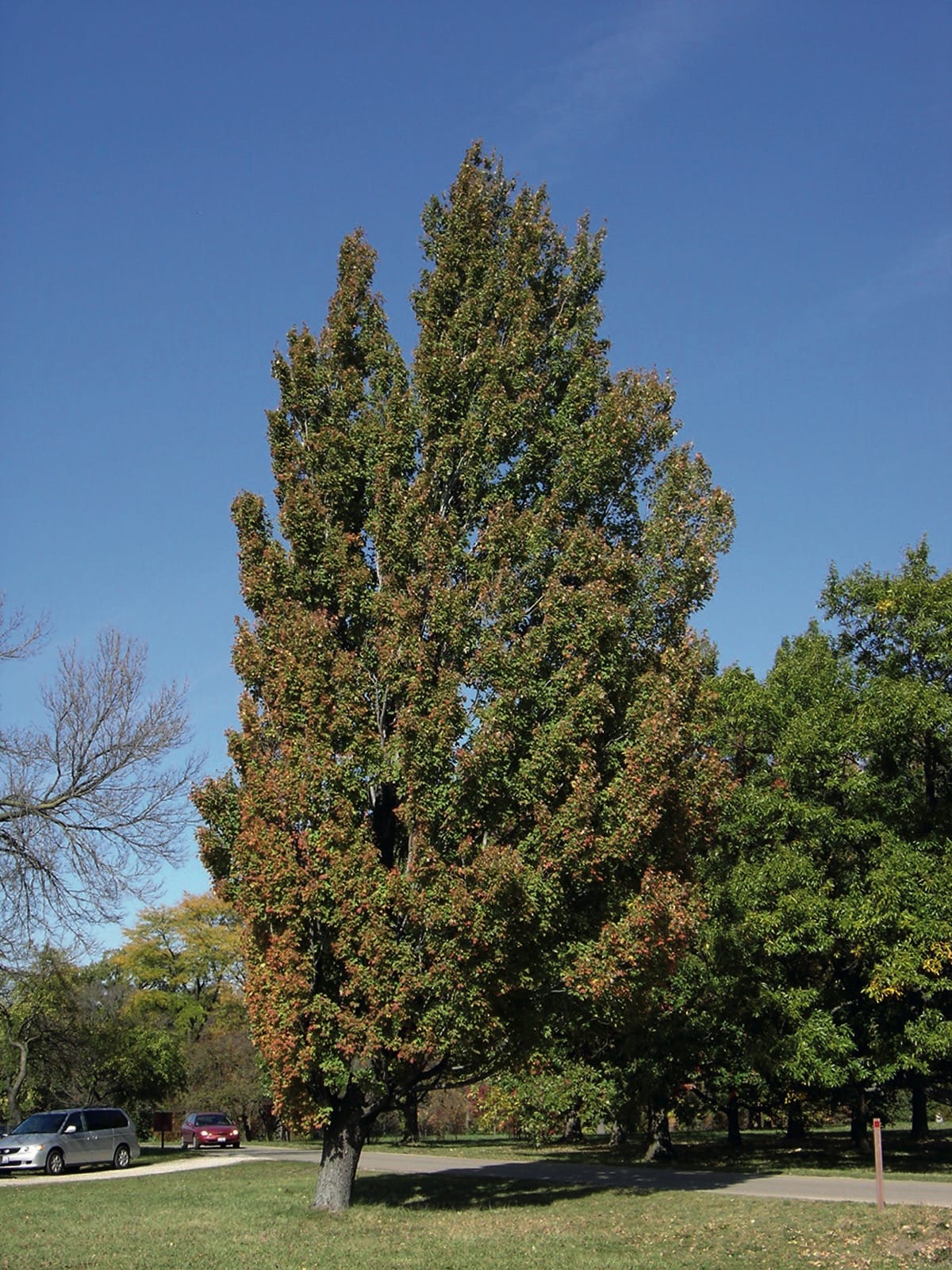Acer × freemanii
Sponsor
Kindly sponsored by
a member of the International Dendrology Society
Credits
Article from New Trees by John Grimshaw & Ross Bayton
Recommended citation
'Acer × freemanii' from the website Trees and Shrubs Online (treesandshrubsonline.
Genus
- Acer
- Sect. Rubra
Other taxa in genus
- Acer acuminatum
- Acer amplum
- Acer argutum
- Acer barbinerve
- Acer buergerianum
- Acer caesium
- Acer calcaratum
- Acer campbellii
- Acer campestre
- Acer 'Candy Stripe'
- Acer capillipes
- Acer cappadocicum
- Acer carpinifolium
- Acer 'Cascade'
- Acer caudatum
- Acer ceriferum
- Acer chapaense
- Acer chienii
- Acer circinatum
- Acer cissifolium
- Acer × conspicuum
- Acer cordatum
- Acer coriaceifolium
- Acer × coriaceum
- Acer crataegifolium
- Acer davidii
- Acer diabolicum
- Acer distylum
- Acer divergens
- Acer duplicatoserratum
- Acer elegantulum
- Acer erianthum
- Acer 'Esk Flamingo'
- Acer fargesii
- Acer fenzelianum
- Acer flabellatum
- Acer forrestii
- Acer franchetii
- Acer fulvescens
- Acer 'Gimborn'
- Acer ginnala
- Acer glabrum
- Acer 'Gold Coin'
- Acer granatense
- Acer grandidentatum
- Acer griseum
- Acer heldreichii
- Acer henryi
- Acer × hillieri
- Acer hookeri
- Acer hyrcanum
- Acer japonicum
- Acer kawakamii
- Acer komarovii
- Acer laevigatum
- Acer laurinum
- Acer laxiflorum
- Acer lobelii
- Acer longipes
- Acer macrophyllum
- Acer mandshuricum
- Acer maximowiczianum
- Acer maximowiczii
- Acer metcalfii
- Acer miaotaiense
- Acer micranthum
- Acer 'Mindavi'
- Acer 'Minorient'
- Acer miyabei
- Acer miyabei × campestre
- Acer monspessulanum
- Acer morifolium
- Acer 'Mozart'
- Acer oblongum
- Acer obtusifolium
- Acer okamotoanum
- Acer oliverianum
- Acer opalus
- Acer orientale
- Acer palmatum
- Acer papilio
- Acer pauciflorum
- Acer pectinatum
- Acer pensylvanicum
- Acer pentaphyllum
- Acer pentapotamicum
- Acer pictum
- Acer pilosum
- Acer pinnatinervium
- Acer platanoides
- Acer platanoides × amplum
- Acer platanoides × truncatum
- Acer × pseudoheldreichii
- Acer pseudoplatanus
- Acer pseudosieboldianum
- Acer pubinerve
- Acer pycnanthum
- Acer rubescens
- Acer rubrum
- Acer rufinerve
- Acer saccharinum
- Acer saccharum
- Acer sempervirens
- Acer 'Serpentine'
- Acer serrulatum
- Acer shenkanense
- Acer sieboldianum
- Acer sikkimense
- Acer 'Silver Cardinal'
- Acer 'Silver Ghost'
- Acer sinense
- Acer sinopurpurascens
- Acer spicatum
- Acer stachyophyllum
- Acer taronense
- Acer tataricum
- Acer tegmentosum
- Acer tenellum
- Acer tetramerum
- Acer tibetense
- Acer tonkinense
- Acer triflorum
- Acer truncatum
- Acer tschonoskii
- Acer turkestanicum
- Acer tutcheri
- Acer ukurunduense
- Acer velutinum
- Acer wardii
- Acer 'White Tigress'
- Acer wilsonii
- Acer × zoeschense
This important maple is the result of a cross between A. rubrum and A. saccharinum. Tree 20–25 m; branches upright, forming rounded or oval crown. Bark silvery grey. Leaves smaller and less deeply lobed than those of A. saccharinum; deeply dissected, sinuses rounded to acute; autumn colour red and yellow on the same leaf. Samaras 3–6 cm long, striated. Flowering February to March (USA). Van Gelderen et al. 1994, van Gelderen & van Gelderen 1999. Distribution USA: occasional where the parents overlap. This hybrid was also produced artificially at the US National Arboretum by Oliver Freeman in 1933. Habitat As for parent species. USDA Hardiness Zone 5–6. Conservation status Not evaluated. Illustration NT85. Cross-reference K76.
Acer ×freemanii is an increasingly important tree, especially in North America, selected clones combining the best features of the two much-loved parents: the flaming reds of the autumn coloration of A. rubrum, with greater tolerance of cold and drier conditions inherited from A. saccharinum. In addition, the hybrid has stronger branches than the notoriously brittle A. saccharinum and is thus more suitable to use as a street tree in its stead (Dirr 1998, van den Berk 2002). In Europe the best-known clone is ‘Jeffersred’ (sold as Autumn Blaze), capable of fabulous autumn colour, as is ‘DTR102’ (Autumn Fantasy), which also colours well in warmer areas. ‘Marmo’ was selected from a male tree in the Morton Arboretum for both its superb and long-lasting autumn colour and its seedlessness. ‘Celzam’ (Celebration) is rather narrow in outline and thus particularly suited for use as a street tree. Other clones are ‘Armstrong’ and ‘Elegant’, once thought to be selections of A. rubrum and A. saccharinum, respectively, but now considered hybrids. All are capable of becoming large trees.

